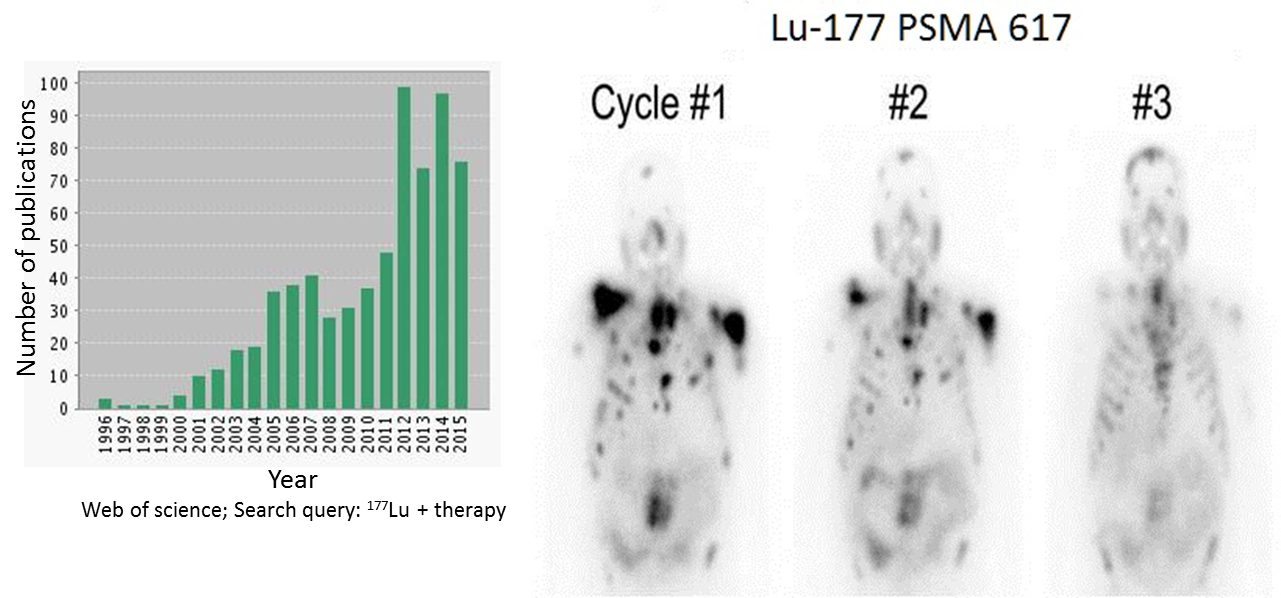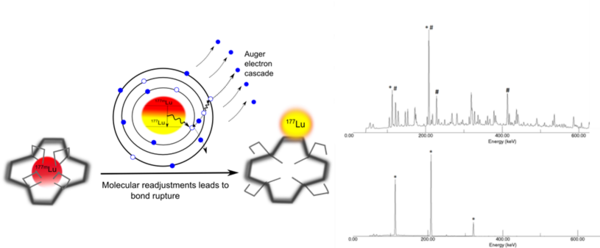Rupali Bharadwaj
Development of radionuclide generator for the production of medicinally important Lu-177
177Lu is a β- and γ ray emitting therapeutic radionuclide. 0.5 MeV β- rays with 2mm tissue penetration depth can exclusively kill the tumour cells. And γ rays makes the simultaneous imaging of the tumour treatment possible. It is already used in neuroendocrine tumour treatment, about 400 treatments with 177Lu – DOTATATE are done yearly at the EMC, Rotterdam. Recently, it also got clinical approval for the prostate cancer treatment, and many other clinical studies using 177Lu are in progress. The demand of 177Lu is expected to increase about 4-5 times in coming 4-5 years.

At the moment, the whole production and supply chain of 177Lu depends on the continuous availability of a few research reactors worldwide which are prone to shut downs and other maintenance issues. This project is aimed at developing a system that provides a regular supply of 177Lu to hospitals, research centres and reduces the continuous nuclear reactor dependency for 177Lu availability. Such a system is called a radionuclide generator, and it will make use of the metastable isomer 177mLu to produce in situ the required amount of 177Lu. A radionuclide generator for 177Lu production has not been reported so far in the literature and involves the big challenge of separating two nuclear isomers.
We are the first group to patent and provide the proof of concept for the separation of these two isomers. It was achieved by immobilizing a 177mLu-DOTATATE complex on tC-18 silica support and the released 177Lu is collected by using a mobile phase flow. We achieved a 1000 times enrichment in 177Lu content compared to their equilibrium ratio, with 60% efficiency.

Figure 1: Principle of separation of the two isomers and the gamma ray spectra of the isomers before and after separation
Your role: In order to meet the clinical demand and to make the generator a commercially viable option, we want 10000 times enrichment in 177Lu concentration. Our efforts are focused on designing systems with very low dissociation and association kinetics between 177mLu and the support. We are working in parallel in many different directions to achieve the chelation of 177mLu on different supports. It’s a novel project with plenty of possibilities and open questions to answer, depending on your interest we can always discuss and design a specific bachelor/ masters project to answer a specific research question.
Working in this project will allow you to work with two groups; catalysis engineering and radiation and isotopes for health. You will be learning techniques such as γ ray spectroscopy, ICP-OES, BET adsorption, XRD, TGA and many more.
-
Separation of nuclear isomers for cancer therapeutic radionuclides based on nuclear decay after-effects. R. Bhardwaj, A. van der Meer, S. K. Das, M. de Bruin, J. Gascon, H. T. Wolterbeek, A. G. Denkova & P. Serra-Crespo. Scientific Reports volume 7, Article number: 44242 (2017)
